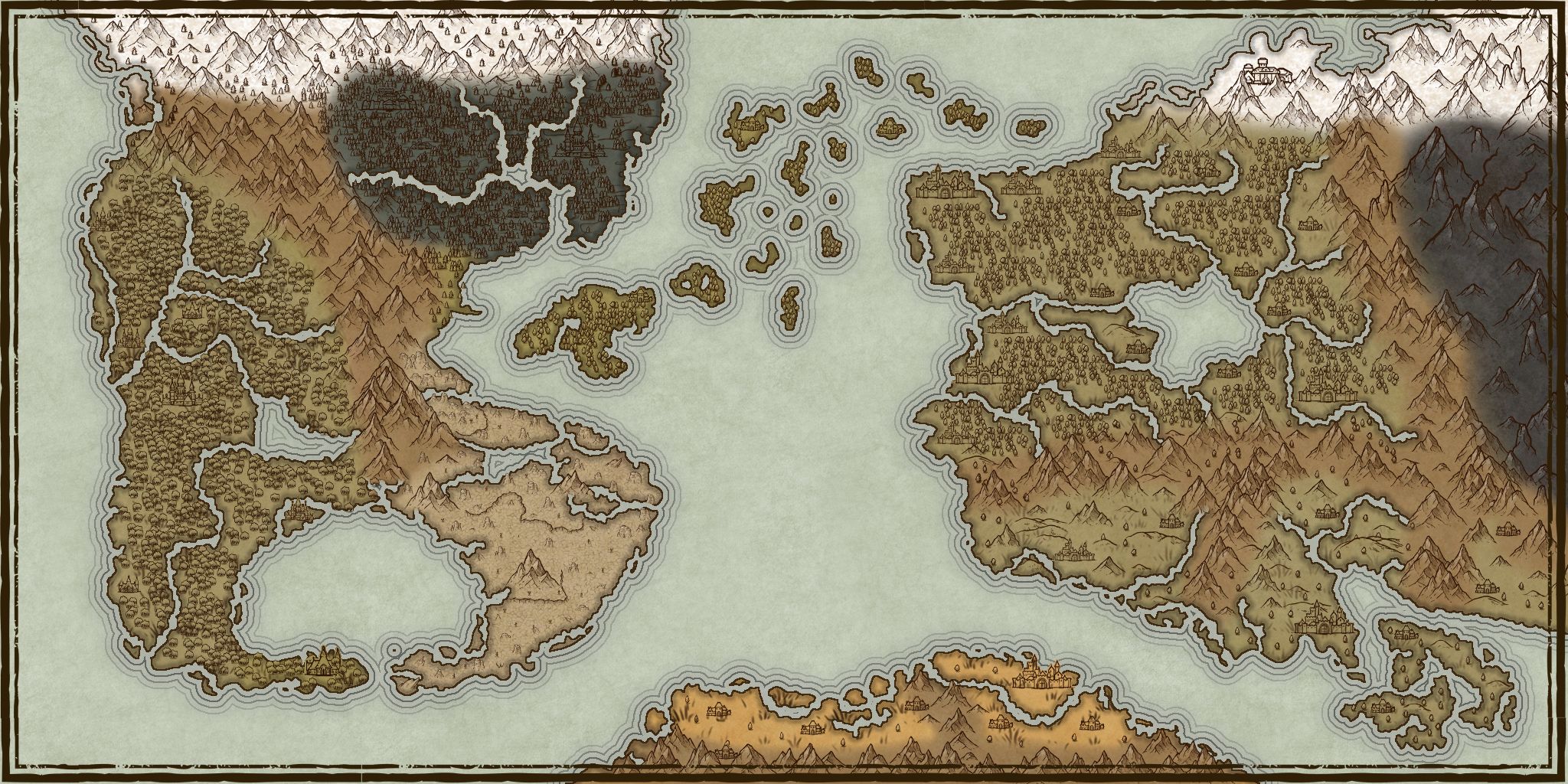The Blasted Wastes
Geography
The Blasted Wastes are a land of rolling sand dunes and jutting pillars of stone, mesa plateaus, and few rivers. It is bordered by the Western Range.
Localized Phenomena
Sandstorms are frequent in the Blasted Wastes, as wind coming from the ocean whips up sand and throws it around the desert environment. Other phenomena include the many heatwaves that result from the intense temperatures, and earthquakes and shifting sand events from the movement of the purple wurms burrowing beneath the desert.
Climate
The Blasted Wastes maintains a hot, dry, and arid climate. It barely rains there, and few clouds leads to lots of heat storing in the ground. There is also very little plant life to siphon and use the sunlight. With the lack of moisture, the land remains extremely dry. However, at night, the desert becomes incredibly cold, as the heat disperses back into the air, and there is no longer a sun to heat it. The land is generally cooler around the few rivers that flow from the mountains towards the ocean, as well as around the ocean itself, but these cool temperatures are rare, as are the rivers.
Fauna & Flora
There are few species of flora or fauna throughout the blasted wastes. Much of the flora consists of various types of cacti, aloe vera, tumbleweeds, agave, acacia trees, and other plants that can hold their moisture very well, as well as survive in arid climates. Some species of fauna include ammits, hyenas, jackals, lions and other cats, leucrotta, spiders & scorpions, basilisks, crocodiles, vultures & hoopoes, drakes, camels, antelopes, lizards, bats, dragons, some sphinxes, and even the massive wurms that burrow beneath the sands.
Natural Resources
The vast majority of the natural resources found in the Wastes are materials scrounged from the flora and fauna, as well as sand and stone from the surrounding environment.
Alternative Name(s)
The Barrens, the Wastes
Type
Desert
Included Organizations
Owning Organization
Contested By
Related Tradition (Primary)
Inhabiting Species



Comments